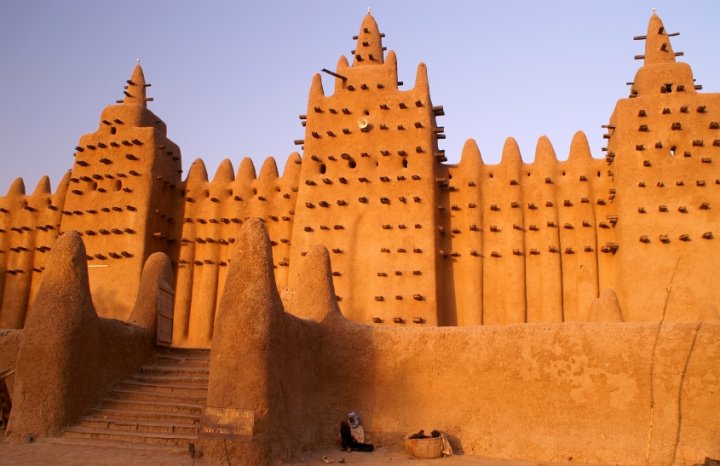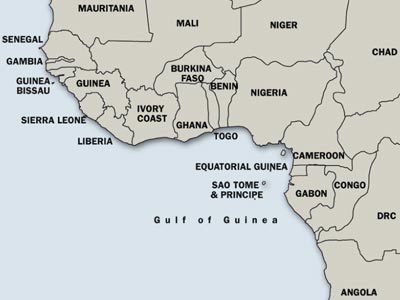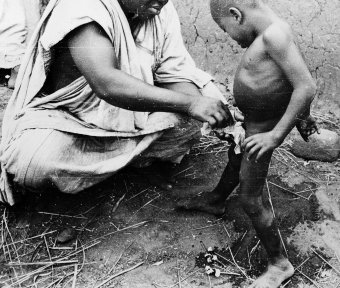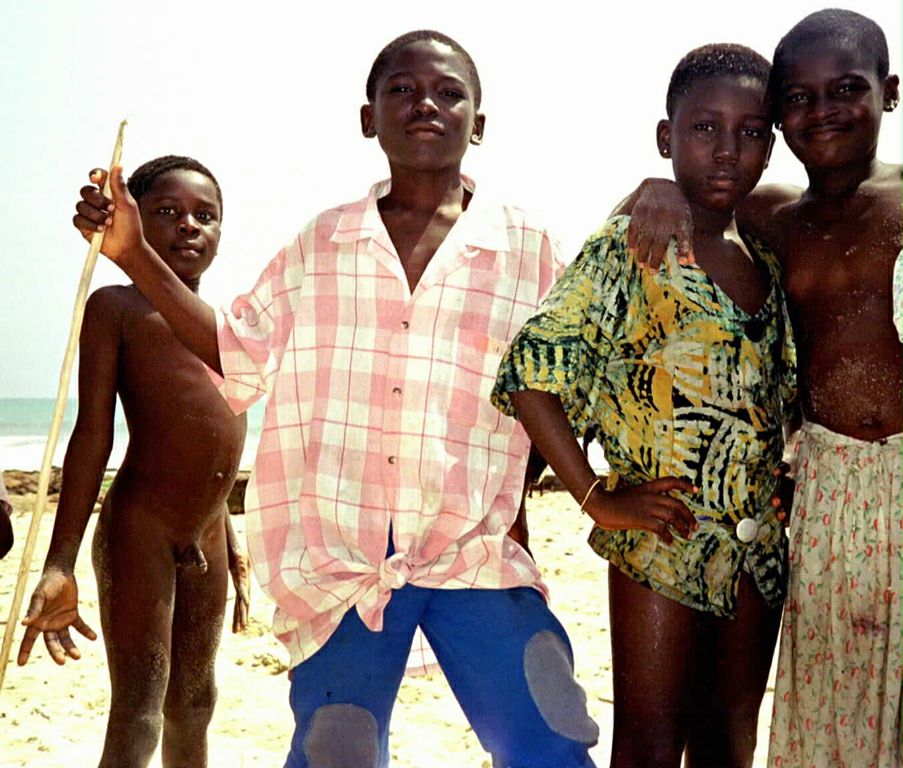
Historic mausoleums of Timbuktu, Mali. iStock
Cultural history and geography

West Africa is a patchwork of countries, some ancient kingdoms such as Mali, others the product of Western colonialism. In some cases plunder would seem a more appropriate word than colonization. It has left some bizarre boundaries, such as the finger of Gambia sticking into Senegal. Attempts have been made over the years to merge countries but they have not been successful, and now it seems the status quo will persist for a while. Civil wars have enveloped Sierra Leone and Congo, not coincidentally because of their huge mineral wealth, but at the time of writing peace seems to reign, with Congo split into two countries. Senegal has the honour, at Cap Verde, of the furthest western point of the Old World. (Portugal has the furthest western point of Europe, at Cabo da Roca).
Outline map of West Africa. Courtesy of Socialist Worker newspaper, UK
The one thing that unites this disparate collection of nations is circumcision. Throughout the region the male circumcision rate is over 95%. Unlike East Africa (see our Kenya and South Africa pages) circumcision is not a 'coming of age' ritual, but is performed in infancy or early childhood. To some extent Muslim influence may be at play here, since many of these nations are predominantly Muslim, but it does seem that circumcision is much older than Islam. Certainly there is no correlation between religion and circumcision.
Liberia, which is 85% Christian, has a 98% circumcision rate, [1],[2] while in Ghana, more than 70% Christian, 95% of men are circumcised. Nigeria has an even split between Christianity and Islam (with a smaller proportion of traditional religions) but most boys are circumcised. In Nigeria it is traditional for boys to be circumcised between the ages of 8 and 40 days, whatever their religion, and most of these circumcisions are performed by medical practioners. This may not always have been the case since a historical image from the Wellcome Collection shows an older boy, maybe 6 or 7, being operated on. The boy seems amazingly unconcerned.

Historical image of a circumcision in Nupe, Northern Nigeria, from the Wellcome Image Library
In the Casamance region of Senegal, inhabited by the Mandinko people, circumcision of young boys takes place at an annual ceremony in August or September. Masked dancers - Kankurang - play an important role in the rituals.[3]
In the village of Sikilo, a Mandinko settlement on the outskirts of Kolda in Southern Senegal, 10 newly circumcised young boys begin singing a traditional song. Within minutes of starting the song, masked dancers known as Kankurang arrive at the house where the boys are waiting. The Kankurang clash together machetes and sticks as they chant loudly.
This is all part of the Kankurang's annual ceremony to bless the young boys. The purpose of their chanting and dancing is to drive away ghosts who might torment the young boys, explains local resident Vieux Mane. He says in this tradition, that has been practiced for generations, these male dancers attend mass circumcisions, usually scheduled for once a year. The Kankurang serve to protect and bless not only newly circumcised young boys, but also newlywed couples and women who are having trouble conceiving children.
In the Kolda region, there are four to five acting Kankurang who perform their annual rituals. Dressed in tree bark and leaves and carrying machetes and sticks, the men often strike a frightening figure. But Ida Touray says she believes the Kankurang's blessings helped her and her husband finally conceive a child after five years of failing to do so. She says her husband took her to many hospitals in Senegal and Gambia, but to no avail. But, she says, she was blessed by the Kankurang last year and says today she is happily nursing a healthy baby boy.
It is not known exactly when the Kankurang first began their circumcision rituals, but for hundreds of years these men have been part of a ceremony that is designed to help young boys understand the rules of social behavior. Though in modern society their role has become increasingly one of local entertainment.
According to de Rachewiltz [4], the sexual taboos of East Africa are largely absent in the west. Boys masturbate freely, both alone and mutually. The Chewa people have a tradition that pre-pubertal children build huts on the outskirts of their villages where they can play - quite realistically - at being husbands and wives. This is seen as being useful training for eventual married life.

Youngsters from Shenge, Sierra Leone. Photo by Otto Zapka.
References and Sources
Many of the references cited here have contributed widely to this article, beyond the actual text citations.
1. Circumcision in Africa Wikipedia
2. Religion in Africa Wikipedia
3. Ricci Shryock, 2010. Senegal Begins Annual Male Circumcision Ceremonies. Voice of America.
4. Boris de Rachewiltz, 1964. Black Eros, Sexual Customs of Africa from Prehistory to the Present day. Translated by Peter Whigham. London: Allen and Unwin.